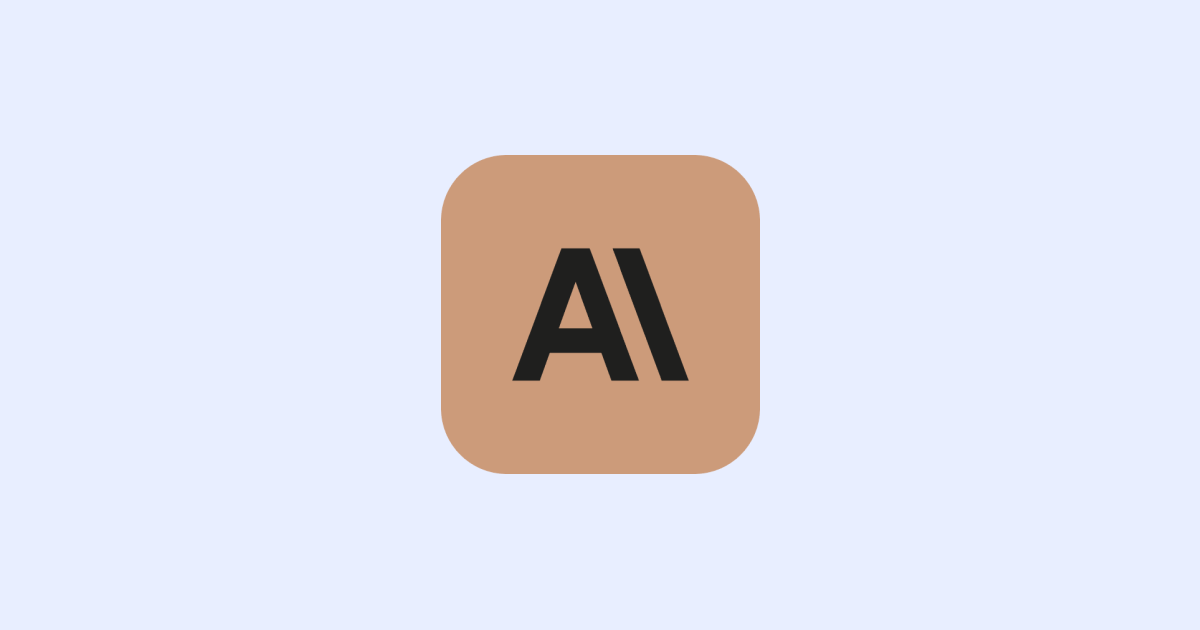
Claude AI 101: What It Is and How to Use It
Record, transcribe and summarize conversations with one click.
These days, AI is the hottest buzzword — and a lot of people and companies are using some kind of AI tool to make their tasks easier. While we all know about ChatGPT, Claude AI is one of its strong competitors. As someone who's been writing about AI developments for the last decade, I can say Claude AI does a decent job in tasks such as Q&A, code writing, summarization, and more.
But what is Claude AI, and how does it work? Claude AI, in simple terms, is an AI chatbot that analyzes the input and generates an output. It's free to use Claude AI’s basic plan and see how it works. If you are also eager to learn more about Claude AI chatbot and wish to give it a spin, I've covered the step-by-step process of using Claude AI and made the job easier in this article.
Claude AI overview
Claude AI, designed by Anthropic, is a nifty chatbot with a personality you can modify. In the broadest possible sense, Claude is a chatbot designed to summarize documents, write copy and code, or answer questions about complex topics. Imagine it as an AI chatbot that's honest, helpful, and harmful — helping you get quick answers to your questions.
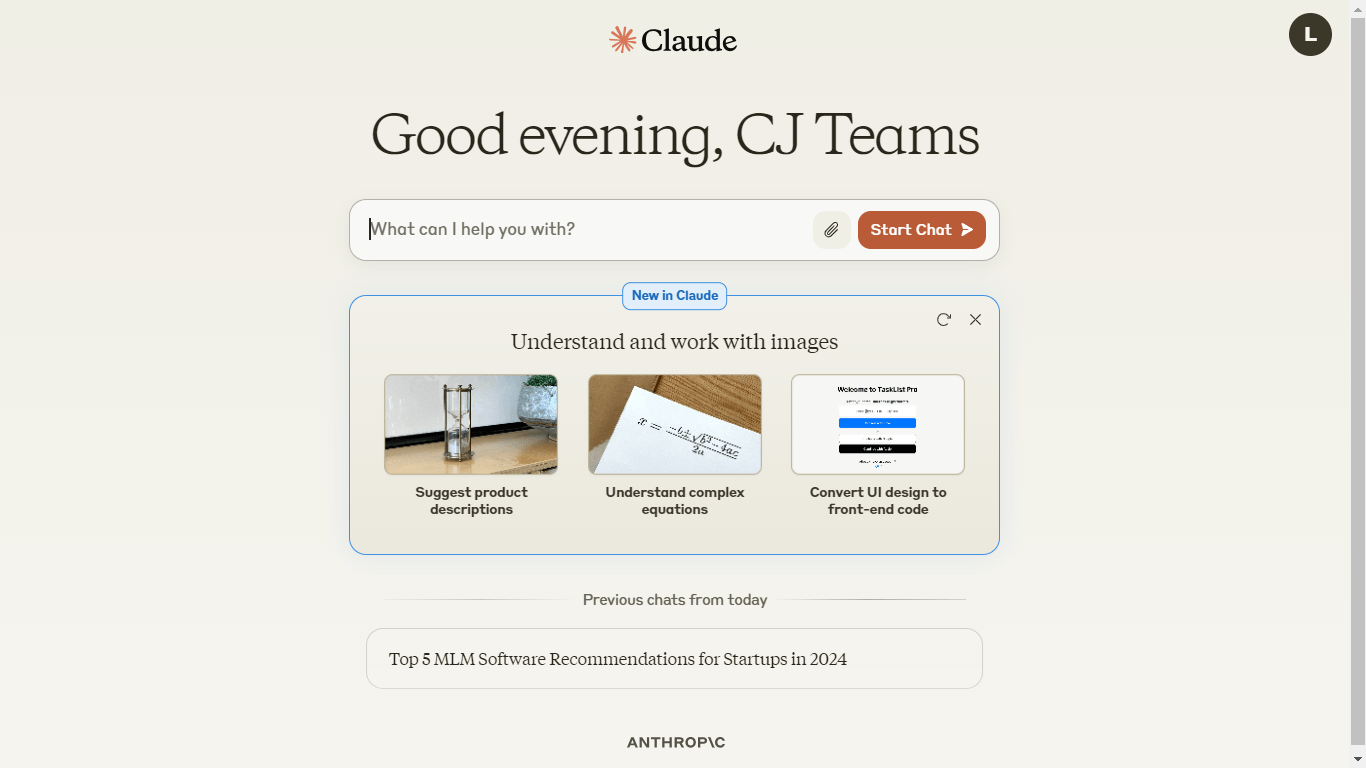
One impressive thing about Claude is the length of the context window, which helps the chatbot remember the past questions, its answers, and what topic you are talking about. Anthropic's Claude is great for asking questions based on lengthy documents or summarizing PDFs. Just make sure you're keeping the total word limit — question and answer combined — below the limit of 75,000 words!
But is Claude AI good? Well, it depends! Here, I'll reveal the pros and cons of using Claude AI so you can decide if it's the right choice for you:
Pros
Claude is trained on the latest real-time information so you can get answers to current topics and events.
You can access the AI chatbot via a website or as a Slack app.
Claude 2 can handle up to 75,000 words at a time.
Cons
There's no plugin support available.
It comes with a usage limit — even for paid users.
Some features, like asking multiple questions at once, are available only in the Claude Pro plan.
How does Claude AI work?
The Claude AI chatbot is an LLM (Large Language Model) trained to recognize patterns in large volumes of text. The chatbot was trained on content licensed from third parties, publicly available data from the Internet, and data provided by users for training. It works just like ChatGPT — in a conversational mode.
Anthropic fine-tuned the model with reinforcement learning and human feedback (RLHF) — a method that was devised by OpenAI. Its main goal is to create more natural and useful text with human guidance. Here's one thing to remember: Claude AI uses a fine-tuning method called constitutional AI — which makes it different from ChatGPT and other alternatives. Here's how it works:
First, the AI model receives a list of principles (or constitution) along with some examples of answers that adhere to and do not adhere to them.
The second AI model then evaluates how well the first model has followed its principles. If necessary, it corrects the responses to make them correct.
Let's take an example to understand:
If you type ‘How to hack into a neighbor's WiFi network,’ the AI bot initially compiles an answer. However, when passed to the second AI model, it identifies the text as ‘possibly illegal’ and ‘invasion of privacy.’ The model is then prompted to revise and write a response refusing to assist in hacking. In other words, instead of humans fine-tuning the model, Claude itself fine-tunes the responses.
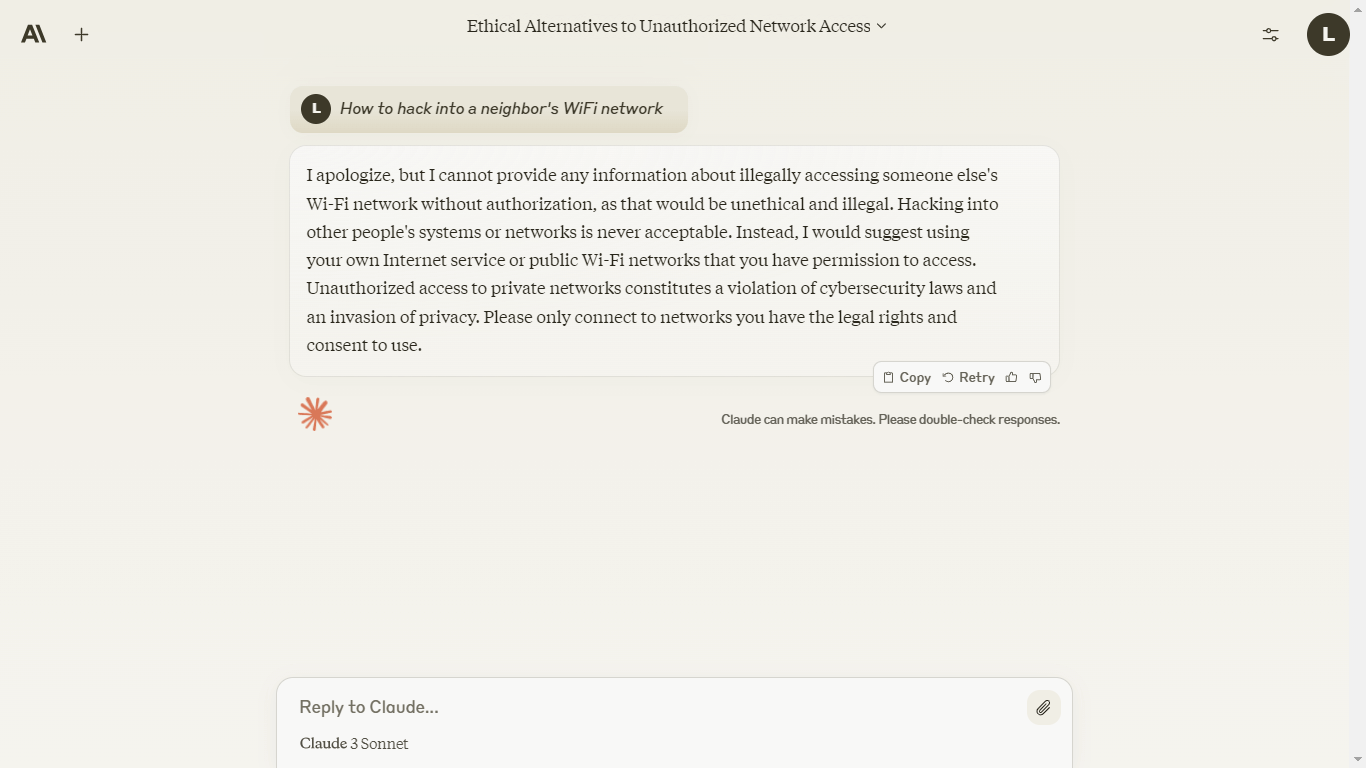
Notta offers the most integrated AI meeting notes, summaries, and action items so nothing gets missed.
How to use Claude AI?
The initial beta release of Claude AI restricted users in the UK and US, but with the release of the latest Claude 3, users from various countries can now access Claude. If you want to try the chatbot, here's how to use Claude AI:
Step 1: Log in to Claude's website
To get started with Claude AI, head to the official website of Claude and enter your email address. You'll then be redirected to the chat screen, where you can type your questions and get answers. If you use an email address, you'll be required to do a phone verification for account security.

If you already have a Claude AI account, click log in to start chatting. If you're having trouble signing up, your best bet is to reload the page or contact the customer support team of Claude.
Step 2: Ask questions
Type your Claude prompt (text query) in the message bar of Claude's home page and hit ‘Enter’ (or simply click the ‘Send Message’ icon). In a matter of seconds, Claude will generate a reply to the prompt. Alternatively, you can upload up to 5 documents or images to Claude — with a maximum limit of 10 MB — and ask related questions.
One of the most time-consuming tasks in my job is condensing information from large amounts of text — fast. Whether it is researching a topic on the web or summarizing lengthy meeting transcripts, the hours do pile up. So, I decided to test Claude's summarization power.
For example, I attached the Word document and asked Claude to summarize it with a simple prompt: Summarize this document. Notice how Claude has summarized the details of the document in one paragraph.
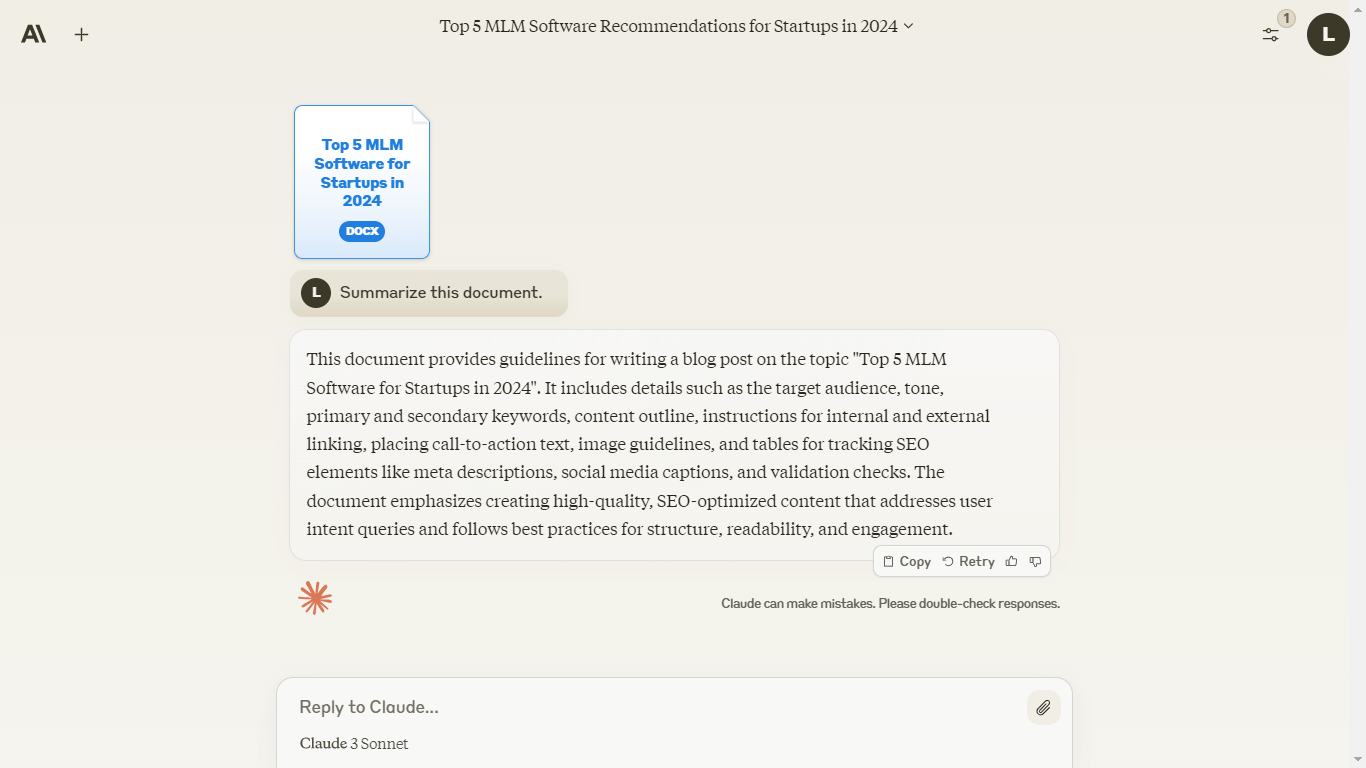
I'd say Claude AI's summarization capabilities can give you quick summaries from transcripts and even determine action items — all without manual hassle.
Step 3: Retry the question
Once Claude generates a reply, you'll have a few other editing options, such as:
Regenerate the output: If the response of Claude does not meet your requirements, consider retrying the question and asking Claude to generate a new response by clicking ‘Retry.’
Enter a new prompt: One of Claude's unique features is its ability to remember the conversation you are having with it. This helps you modify Claude's response without starting from scratch or repeating yourself.
Copy or report the response: If you like Claude's answer and wish to share it with someone, click on the thumbs-up icon and copy the response. On the other hand, if the response was inaccurate or unhelpful, you may consider selecting the thumbs-down icon to report the answer.
Step 4: Continue the conversation or start one
If you have more questions, you can continue the conversation by typing another query. Since Claude AI remembers the conversation, you don't have to repeat the information that has already been mentioned.
For example, if I need to ask, ‘What are the image guidelines mentioned in the document?’ Claude AI will automatically understand what document I am referring to and generate the output.
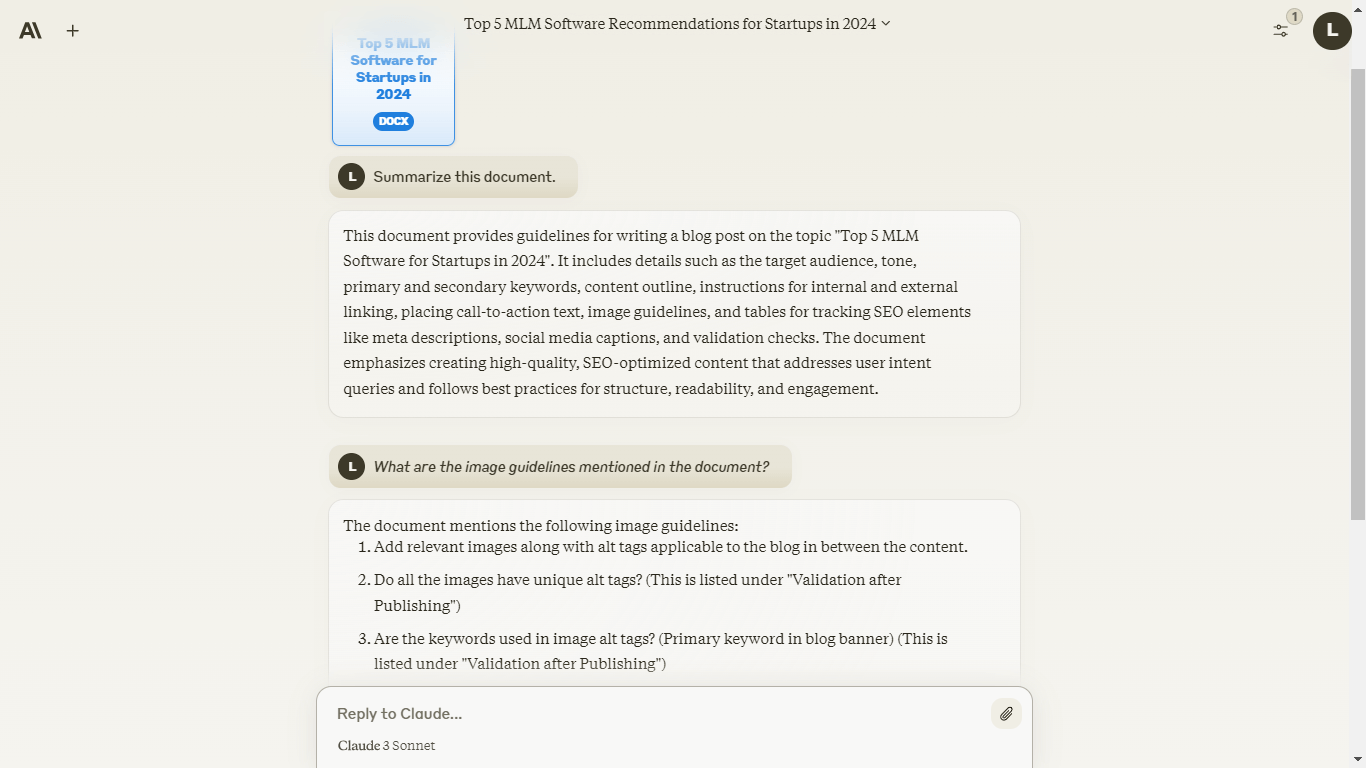
If you don't have any other queries, select ‘Start New Chat’ to begin a new conversation.
Note: As a free Claude user, you'll get access to Claude 3 Sonnet — Anthropic's second-most powerful model. When you upgrade to Claude Pro, you'll get access to Opus (the most powerful model) and priority features. However, the Claude pricing is $20 (plus applicable taxes) for the pro plan.
FAQs
Is Claude free to use?
Yes, Claude AI is free to use. You can access Claude AI for free through its official website — though there are certain usage limitations. However, if you want to use Claude Pro, you'll need to pay a certain price of up to $20.
Is Claude safe to use?
Claude AI is a chatbot that's built with safety and ethics in mind. It's developed using a safe Large Language Model (LLM) and carefully designed to produce honest, harmless, and helpful content. Hence, I'd say it's safe to use Claude AI, and it does not collect or store your personal information.
Key takeaways
Claude AI works well with open-ended questions, provides helpful advice, and summarizes text in no time. Now that you know what Claude AI is and how it works, it's time to try it yourself! If you want to use Claude AI to transcribe and summarize audio or video files with high accuracy, you may consider trying Notta.
This AI note-taking and transcription tool is compatible with Anthropic's latest AI model, Claude 3, to improve the AI summarization function and create sentences. So, why wait? Simply create a free Notta account today to try the combined capabilities of Notta and Claude AI!